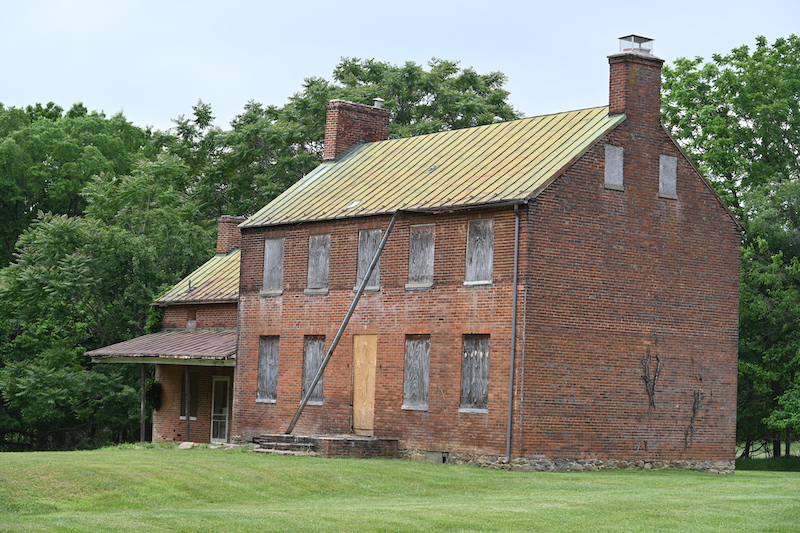Town launches income-producing trees project

Green grows the Aberdeen property of Purcellville
Who said money doesn’t grow on trees?
It soon will in Purcellville. And we’re not talking pocket change.
In May, the Town wrapped up three weeks of planting 110,000 trees on what’s known as the Aberdeen property—190 acres that belongs to Purcellville—at 16385 Short Hill Road.
Over the next ten years, the trees planted on 95 of those acres will grow into a forest designed to increase the biodiversity of the area and invite back song birds and wildlife. The trees also will grow the Town’s bank account, yielding more than $700,000 in net revenue with little administrative cost.

Those revenues will come in part from a contract for the property’s management by the country’s largest horticultural services company. In addition, the Town will derive income from monetized “credits” from stream, wetland, and carbon sequestration, which is the process by which carbon dioxide is removed from the atmosphere and held in solid or liquid form.
The credits will work this way: The Virginia Department of Environmental Quality will issue credits for the reduction in nutrients and sediments achieved on the Aberdeen property. Those credits can then be sold to public and commercial developers who are required to purchase nutrient credits for their development.
For example, when grading and construction get underway on the Rt. 690/Rt. 7 interchange, some streams and wetlands will be degraded by VDOT. That degradation could be permitted and offset by VDOT’s potential purchase of credits from the Aberdeen nutrient credit bank. Likewise, if a data center is being built in Ashburn, there will be some degradation to the environment, and as such, the data center developer will need to purchase credits to be permitted to build.
Other potential sources of Town income from the Aberdeen tree project are public and private contributions to adopt any of the trees. Purcellville Mayor Kwasi Fraser says he has already been contacted by one major corporation interested in the launch of an adoption program.
Once mature, the 95-acre nutrient credit bank area can welcome naturalists, hikers, and other visitors. Meanwhile, the Town will proceed to seek grants to restore the Federal-era brick house on the remaining 100 acres. Council Member Stan Milan will be working with historians to verify and tell the stories of enslaved African people who once lived on the property.
The perimeter of the property will become a horse and walking trail; the pond will be restored and stocked with fish. The wells on the property will be brought online to increase fresh water to the Town. Managed hunting similar to Leesburg’s Banshee Reeks program could be implemented. A house at the entrance to the property could be renovated into a guest house or welcome center. There is also potential for recreational activities such as zip-lining, camping, and flying drones through an obstacle course.
The Town Council will hold a June 8 vote to approve the contract for nutrient mitigation credits. That contract is part of a package of documents that should be signed at the same time to achieve the best advantage for the Town. There is also a Deed of Restrictions and a Mitigation Activity License Agreement that specify what contractor Davey Resource Group and its subsidiary Wetland Studies and Solutions, Inc. are allowed to do on the Aberdeen property.
Davey Resource Group, which began as a tree services company, is celebrating its 125th anniversary this year. Now an international company with 5,000 employees, the firm offers expertise in horticultural, environmental, and consulting to residential, utility, commercial, and governmental markets. The company is employee-owned.

Mayor Fraser, who has been looking for ways to monetize the Aberdeen property through an environmental program, found his inspiration in a $43.9 million landmark forest protection deal between Norway and Guyana. The Purcellville program is adapted from it.
“This model is further evidence that a town does not need to rely on rooftops for revenue or to keep going into its taxpayers’ pockets to fund operations,” said Fraser. “We need to embrace innovation and responsibly monetize the assets we are blessed with. Water and sewer taps are finite. No new land is being created; however, innovation and creativity is infinite.
“With the Aberdeen project, we will be returning the land to it pristine natural state. We will be achieving conservation goals and bringing revenue to the Town,” Fraser added.
“I think President Theodore Roosevelt would be proud of Purcellville.”
Comments
Any name-calling and profanity will be taken off. The webmaster reserves the right to remove any offensive posts.
